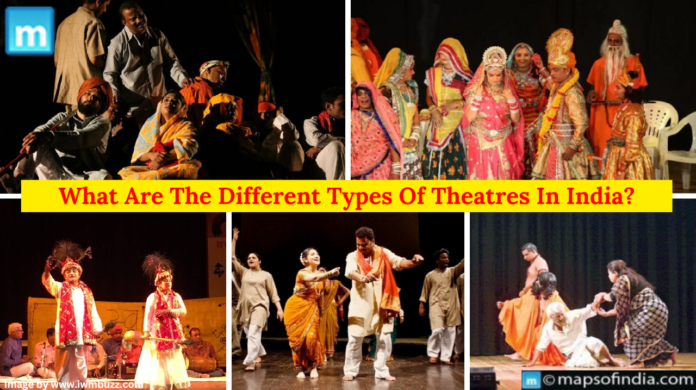India has a broad range of theatre forms that differ by state. From the classical beauty of Kudiyattam in Kerala to the boisterous folk performances of Nautanki in Uttar Pradesh, each state adds its flavour to the dynamic diversity of Indian theatre.
Look at seven different types of theatres across various Indian states
-
Kudiyattam (Kerala)
Kerala, also known as the cradle of Indian arts, is home to the ancient theatre form of Kudiyattam. Kudiyattam is one of the world’s oldest surviving theatre traditions, having been designated a Masterpiece of the Oral and Intangible Heritage of Humanity by UNESCO. Originating in Kerala temples, Kudiyattam blends dance, music, and theatre to tell stories from Hindu mythology, particularly the Ramayana and Mahabharata epics. Kudiyattam performances are distinguished by extravagant costumes, exaggerated motions, and ancient Sanskrit recitations, providing an unforgettable experience.
-
Yakshagana (Karnataka)
Yakshagana, a traditional Karnataka theatre genre, combines song, dance, and conversation. It originated in Karnataka’s coastal regions and often depicts tales from Hindu epics and Puranas. The performances are accompanied by live music and colourful costumes. The actors, known as Yakshagana artistes, undergo extensive dance and vocal training to bring the figures to life on stage. Yakshagana, with its vibrant storytelling and rhythmic music, continues to attract audiences throughout Karnataka and beyond.
-
Bhavai (Gujarat)
Bhavai is a classic folk theatrical genre that started in Gujarat and extended to Rajasthan and Madhya Pradesh. It is renowned for its upbeat music, lively dance, and sarcastic narration. Bhavai performances often include topics from mythology, folklore, and social issues, all presented vividly and amusingly. The actors, Bhavaiyas, captivate the audience with colourful costumes and funny comments. With humour, drama, and criticism of society, Bhavai remains an essential element of Gujarati’s cultural history.
-
Jatra (West Bengal)
Jatra is a popular folk theatre style in West Bengal, distinguished by its energetic music, lavish costumes, and magnificent scenery. Jatra began as a religious procession and evolved into a full-fledged theatrical production that included stories from Hindu mythology, historical events, and current social issues. Performances often take place outside, attracting big crowds of eager spectators. Jatra provides a cultural forum for rural communities to express their creativity and honour their heritage.
-
Tamasha (Maharashtra)
Tamasha is a dynamic folk theatre form that originated in Maharashtra and is especially popular in rural areas. It blends elements of song, dance, and drama to deliver fascinating stories that often revolve around themes of love, betrayal, and societal conventions. Tamasha performances include exciting music played on traditional instruments such as the dholki and harmonium, and the actors, known as tamashdars, fascinate the audience with their enthusiastic performances. Tamasha is a type of entertainment and social commentary that depicts the joys and challenges of rural life in Maharashtra.
-
Bhaona (Assam)
Bhaona is a traditional theatre style practised in Assam, particularly at Vaishnavite monasteries known as Satras. It is based on the teachings of the medieval saint Srimanta Sankardeva and uses dance, music, and theatre to spread religious and moral principles. During holidays such as Rasa-lila and Janmashtami, performances about Lord Krishna’s life and teachings are frequently given. Bhaona is integral in preserving Assamese culture and spirituality as a cultural link between the past and present.
-
Nautanki (Uttar Pradesh)
Nautanki is a popular folk theatre form of Uttar Pradesh, characterized by its lively music, witty dialogues, and colorful costumes. Originating from the region of Awadh, Nautanki performances feature a mix of song, dance, and drama, often focusing on themes of love, courage, and social satire. The actors, known as Nautanki walas, employ melodious tunes and humorous anecdotes to entertain audiences in village squares and fairs. With its spontaneous energy and grassroots appeal, Nautanki continues to enchant audiences in rural and urban areas alike.




